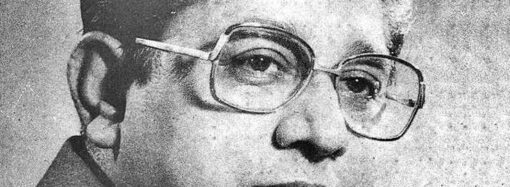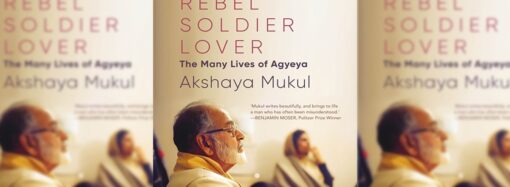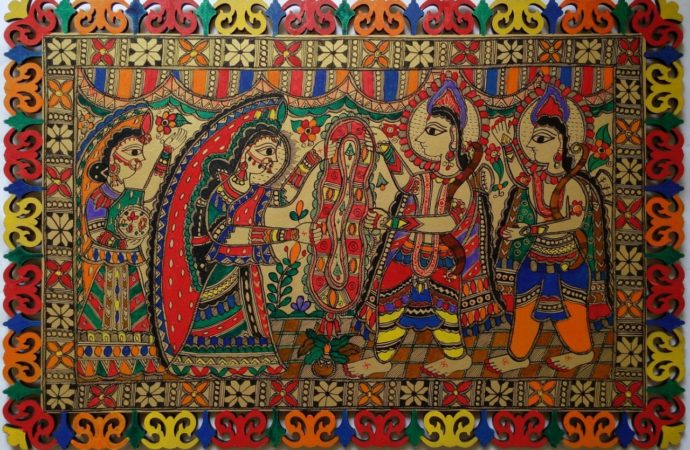Chitra Banerjee Divakaruni writes The Forest of Enchantments on the behalf of Sita, as she sits in the aashram of sage Valmiki.
It is one of the most heard stories in Indian household. A story which may be older than a Deodar tree but still appears fresh as a tender meristematic tissue of a young shrub. Chitra Banerjee Divakaruni writes The Forest of Enchantments on the behalf of Sita, as she sits in the aashram of sage Valmiki and clamoring voices of the neglected women surge within her. Our protagonist is an epitome of muliebrity and is wedded to a brave, sagacious, and judicious king Ram. The author therefore narrates Sita’s version of the journey from a bright young princess of Mithila to Ram’s consort who treads with him side-by-side while he performed his duties as a monarch of Ayodhya.
This is author’s second novel in the series where she presents women’s perspective from the two great epics, Mahabharata and Ramayana. The predecessor of this book was The Palace of Illusions that came in 2008 and gave words to Draupadi’s effulgent spirit, her blatant rebellion against traditions, and her rage for those who had hurt her. I personally prefer Divakaruni’s Panchali over the demure and pellucid Sita. The former is a belligerent queen who doesn’t hesitate in rejecting Karna in an open court and whose long untangled locks reminded her of vengeance she always longed for. But, her Sita from the current book is completely dissimilar. She is known for her kind, enduring, and mild-mannered self that remains unmoved during her darkest hours.
Sita has been rebranded earlier by various other authors. A novel named Sitayan by Mallika Sengupta; Devdutt Pattnaik’s The Girl who Chose; and Amish Tripathi’s Sita: Warrior of Mithila are efforts in the same direction. But, Divakaruni’s rendition is picturesque and mellifluous treat to read. The author sticks to original facts stated in Valmiki’s Ramayan and blends women’s perspective beautifully into it. “If Valmiki’s vision was true, soon I, too, would be facing him. Ram: monarch, father, warrior, husband. The beloved who abandoned me when I needed him the most. My greatest joy and my greatest despair,” says Sita while commencing her Sitayan at the thatched hut of sage Valmiki. The hearts of readers jubilate as the author and her female characters begin a euphonious symphony.
The Divakaruni’s prose weaves a picturesque imagery of events. One could envision the grandeur of Sita’s palace, her ethereal beauty and frolic with sisters, and Ram’s longing for her through a fine gossamer of words. With the slightest of efforts, author’s words take the shape of sentences, morph into ideas, and then lead to events. Her language is delicate as a morning flower on hills, yet is firm and thought-provoking. I personally admire author’s capability to unravel various facets of the protagonist and other female characters in this epic. Kakeyi’s character to me was most inspiring. As a skilled warrior and an eminent strategist, she was an ideal queen for me. Mandodari appeared to me another humane stateswoman taking care of her husband’s captive efficiently.
While Sunaina is an assertive wife, a firm decision-maker, and an effective organizer of all events for Janak’s household, she is also a compassionate mother for our protagonist. Sita is a naturalist by birth, sincere yet bold daughter, skilled herbalist, dedicated lover, kind daughter-in-law, and firm nurturer as a mother. She is a meditative being, mindful of everyone’s grief and pleasure, and a quintessential feminist. “I tortured myself with these same thoughts many times as I lay stone-bound. Yes, that was part of the curse – that I should feel every moment of my interment”, writes Divakaruni to describe distress of Ahalya, the abandoned wife of sage Gautam.
Ram in every version of Ramayan is a conflicted character wedged between his duties as a monarch and as a husband. The author’s efforts to find an intersection between his ideals as a king and one-sided decisions for Sita are apparent which to me seemed unfair. For me, he was the sole reason behind all the anguish of Sita. After reading several versions of Ramayan, I too felt that he was a highly nuanced character and an ardent lover. It appears, whenever he takes decisions that hurt Sita, they hurt him equally. Laxman too was a jilted lover, committed more towards his brother than his wife. The author’s narrative of Ravan’s character seemed just to me as Ravan abducted Sita to avenge his sister’s mutilation.
Divakaruni was able to narrate plight of Soorpanakha admirably and how her mutilated identity haunted Sita for several years.All through the author’s version of the epic, Sita tells herself to ‘endure’. According to me, endurance is like a nerve-soothing drug which can relieve trivial pains at times but can trap an individual in incurable circumstances. Towards the end, Sita revolts against her own philosophy of endurance and hence takes a firm stance against patriarchy. “O King of Ayodhya! I address you in this way because you have placed your role as a king ahead of your role as a husband. In this court, which has been set up to dispense justice to all citizens, I ask you this, for I have been a citizen of Ayodhya too. Did you act justly when you sent me away to the forest, knowing I was innocent of what gossip-mongers whispered?”, says Sita sternly to a king after being wronged by her husband several times.
Most of the feminists have celebrated Sita’s climactic act of defiance, when she asks mother earth to exhume her as the biggest act against patriarchy. Rebellion for me could have meant defeating Ram in a battle, dethroning him, and then placing Lav and Kush on the throne of Ayodhya. The author, however justifies her every act by calling it ‘power of love’. Love she says, compels us to ignore follies of our loved ones. The end is indeed heart-wrenching and tragic, no matter how many versions you have heard or seen of it. The Forest of Enchantments, hence is a celebration of women characters of Ramayan, pluralists, cynics, seekers, and enlightened equally.


















Leave a Comment
Your email address will not be published. Required fields are marked with *